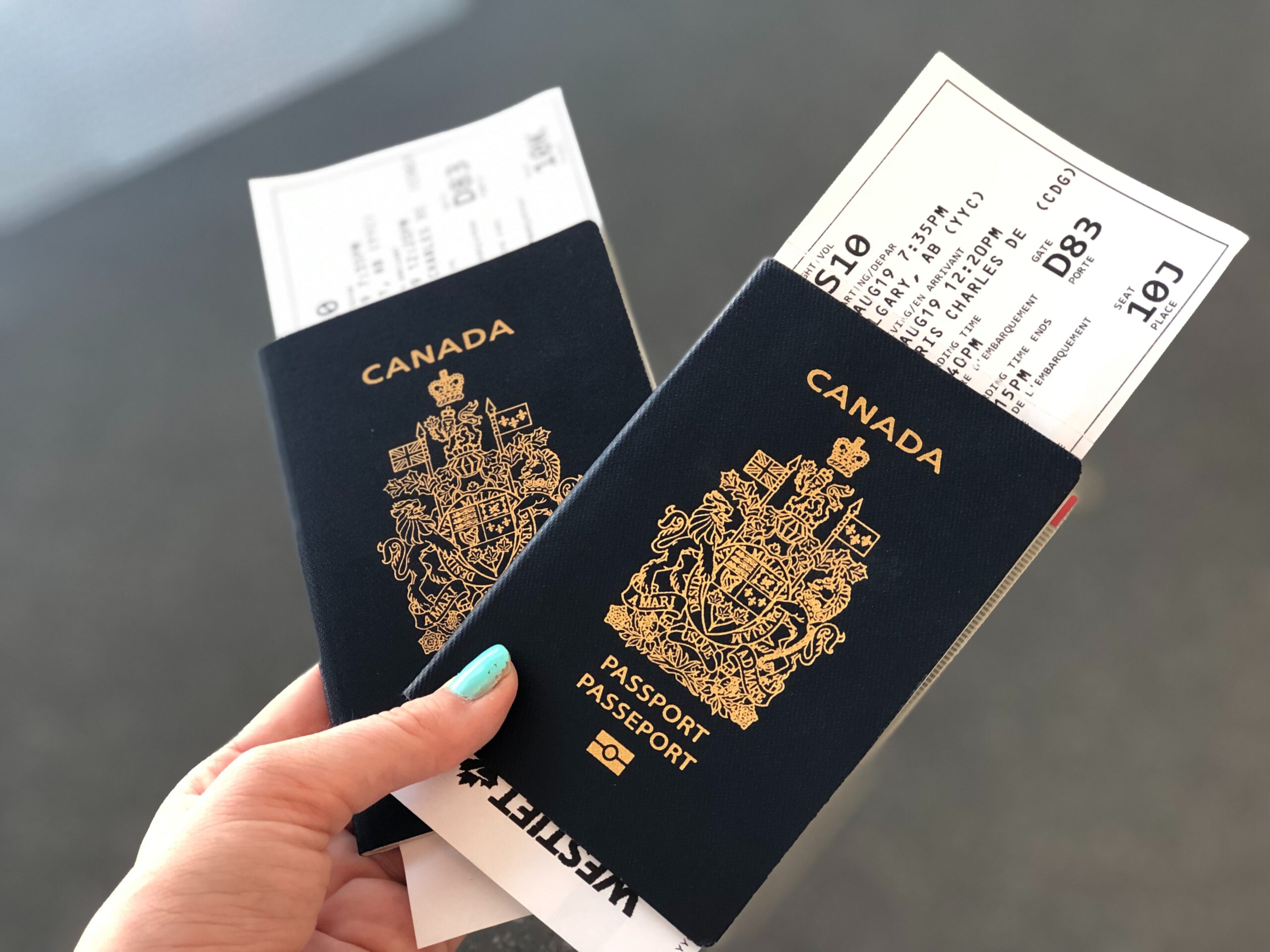When considering life in Canada, understanding the benefits of being a Permanent Resident (PR) versus a Canadian citizen is crucial. Each status offers distinct advantages that cater to different needs and aspirations. Benefits of Permanent Residency in Canada Healthcare Permanent residents have access to Canadas public healthcare system, which is among the best in the world. The extent of free healthcare, however, varies by province. For example, in Alberta, healthcare is free, while in some other provinces, residents might need to pay a monthly premium. Education Children of permanent residents can attend public schools from kindergarten to grade 12 without paying tuition fees. This benefit ensures access to quality education for families residing in Canada. Employment and Study Permanent residents can work for any employer and study in Canada without the need for separate work or study permits. This flexibility opens up numerous opportunities for career and personal growth. Residency Rights Permanent residents have the right to live, work, and settle anywhere in Canada. This freedom allows individuals and families to choose the best environment for their lifestyle and career. Path to Citizenship After fulfilling the residency requirements, permanent residents can apply for Canadian citizenship. This process involves living in Canada for a specific period, demonstrating language proficiency, and passing a citizenship test. Social Benefits Permanent residents are eligible for various social benefits, including the Canada Pension Plan, Old Age Security, and the Guaranteed Income Supplement. These benefits provide financial support and security for residents. Protection Under Canadian Law Permanent residents enjoy legal protections under Canadian law, ensuring their rights are safeguarded while they reside in the country. Benefits of Canadian Citizenship Voting Rights Canadian citizens have the right to vote in federal, provincial, and municipal elections. This ability to participate in the democratic process allows citizens to have a say in the country’s governance and future. Government Jobs Certain jobs, particularly those within the federal government and national security sectors, are only available to Canadian citizens. This opens up unique and prestigious employment opportunities. Running for Office Only Canadian citizens can run for political office, such as becoming a mayor, councilor, or member of parliament. This opportunity enables citizens to directly influence their communities and country. Canadian Passport Citizens can obtain a Canadian passport, which is one of the most powerful passports globally. It allows for visa-free or visa-on-arrival travel to many countries, facilitating international travel and business. No Risk of Deportation Unlike permanent residents, Canadian citizens cannot be deported for criminal activity. This security provides peace of mind and stability for individuals and their families. Dual Citizenship Canada permits dual citizenship, allowing individuals to maintain their citizenship in another country if that country also permits it. This flexibility can be advantageous for those with strong ties to multiple countries. Permanent Status Canadian citizenship does not expire and does not require renewal, unlike the Permanent Resident Card, which must be renewed every five years. This permanence ensures long-term stability for citizens. Protection and Assistance Abroad Canadian citizens can seek help from Canadian embassies and consulates when traveling abroad. This assistance can be invaluable in emergencies or challenging situations. Key Differences Between Permanent Residents and Citizens 1- Voting and Political Participation: Only citizens can vote and run for political office. 2- Employment: Some government jobs are restricted to citizens. 3- Travel: Citizens enjoy easier global travel access with a Canadian passport. 4- Legal Status: Permanent residents can be deported for serious crimes, whereas citizens generally cannot. 5- Residency Obligation: Permanent residents must meet residency requirements to maintain their status, while citizens do not have such obligations. In conclusion, both permanent residency and Canadian citizenship offer significant benefits, but the choice between the two depends on individual goals and circumstances. Permanent residency provides essential rights and access to services, while citizenship offers additional privileges and long-term security. Understanding these differences can help individuals make informed decisions about their future in Canada. Let Worldbridge Immigration Services be your guide to a successful future in Canada Contact us: Website: www.theworldbridge.ca Email: info@theworldbridge.ca Phone/WhatsApp: +1-416-727-7766 Social Media: @worldbridgeHQ
How to Become a Canadian Permanent Resident: Different Pathways Explained
Canada offers various pathways for individuals seeking to become permanent residents, ultimately leading to citizenship. The Immigration, Refugees, and Citizenship Canada (IRCC) has outlined several routes catering to different profiles and skill sets. This article delves into four primary pathways to obtaining Canadian permanent residency: the student route, the Federal Express Entry route, the Provincial Nominee Program (PNP), and the work permit route. 1. Student Route The student route is a popular option for many aspiring immigrants. Heres a detailed process to achieve permanent residency through this pathway: – Admission to a Canadian Institution: Secure admission to a Canadian educational institution, such as for a masters degree. – Completion of Studies: Successfully complete your studies and obtain your degree. – Post-Graduation Work Permit: Secure a job and gain at least one year of work experience in Canada. – Application for Permanent Residency: Apply for permanent residency through the IRCC. Notably, you do not need to submit proof of funds if you are applying from within Canada. – Language Proficiency and Documentation: Take the IELTS test and gather all necessary documents before submitting your application. – Draw and Selection: Wait for the draw results. If selected, you will be asked to submit your passport for stamping, officially granting you permanent residency. Read More-Post-graduation Work Permit Program Overview 2. Federal Express Entry Route The Federal Express Entry route is designed for skilled workers applying from outside Canada. This process involves several steps: – Gather Required Documents: Prepare essential documents such as IELTS test results, degree verification by WES (World Education Services), bank statements, biometrics, and medical exams. – NOC Matching: Ensure your work experience matches the National Occupational Classification (NOC) relevant to your profession. – Profile Creation and Submission: Create a profile on the IRCC website and submit all documents. – Invitation to Apply: Wait for the IRCC to review your profile. If additional documents are required, you will be notified. – Background and Criminality Checks: Undergo comprehensive background and criminality checks. – Passport Stamping and Landing: Upon receiving the golden email, submit your passport for visa stamping. Upon arrival in Canada, complete necessary forms for your permanent resident card, which typically arrives in about two months. Read More-Express Entry Explained 3. Provincial Nominee Program (PNP) The Provincial Nominee Program (PNP) allows provinces to nominate candidates based on their specific labor market needs. Heres how it works: – Target a Province: Identify a province you wish to move to, such as Saskatchewan. – Apply for Provincial Nomination: Submit an application to the provincial PNP. – Receive Nomination and Points: If nominated, you receive an additional 600 points, significantly boosting your score in the express entry pool. – Submit Comprehensive Application: Once you receive an invitation to apply, submit all required documents, including proof of work experience and educational credentials. – Provincial Residency Requirement: Initially, you must reside in the province that nominated you. After a certain period, you may be eligible to move to another province within Canada. Read More-Provincial Nominee program detailed 4. Work Permit Route The work permit route involves securing employment in Canada and obtaining the necessary permits. This route can be pursued from both outside and within Canada: – Job Offer and LMIA: Apply for a job in Canada. The employer must obtain a Labour Market Impact Assessment (LMIA), proving the need to hire a foreign worker. – Closed Work Permit: If approved, you will receive a closed work permit, which ties you to the specific employer. – Open Work Permit for Spouses: Spouses of students can apply for an open work permit, allowing them to work for any employer in Canada. – Permanent Residency Application: After gaining sufficient work experience, apply for permanent residency. As with the student route, proof of funds is not required if you are already in Canada. Citizenship Pathway Once you become a permanent resident through any of these routes, your journey to citizenship begins. You must reside in Canada for at least three years before you can apply for citizenship. Note that any time spent outside Canada during this period does not count towards the residency requirement. Canada provides a welcoming environment and various legal pathways for skilled workers, students, and professionals seeking permanent residency. It is crucial to follow the correct procedures and legal routes to ensure a smooth transition and successful integration into Canadian society. For more information, visit the official IRCC website at Canada.ca and explore the specific requirements for each pathway. By adhering to these guidelines and preparing thoroughly, you can achieve your goal of becoming a Canadian permanent resident and, eventually, a citizen. Let Worldbridge Immigration Services be your guide to a successful future in Canada Contact us: Website: www.theworldbridge.ca Email: info@theworldbridge.ca Phone/WhatsApp: +1-416-727-7766 Social Media: @worldbridgeHQ
Filing Taxes as a New Immigrant in Canada
Navigating the Canadian tax system can be daunting, especially for new immigrants. Understanding the importance of timely and accurate tax filing can save you from future hassles and ensure you receive all the benefits and credits you’re entitled to. This guide covers the essentials of filing taxes as a new immigrant in Canada, including residency status, world income, foreign property, and the filing process. Importance of Filing Taxes Many new immigrants mistakenly believe they don’t need to file taxes if they were in Canada only briefly to obtain their permanent residency (PR) or work permit before returning to their home country. However, it is crucial to file taxes for the year you received any Canadian visa status, even if you had no income or weren’t residing in Canada. Filing your taxes accurately and on time helps the Canada Revenue Agency (CRA) calculate your GST credits and other benefits, ensuring you receive what you’re entitled to when you eventually move to Canada permanently. Declaring Residency Status Your residency status significantly affects your tax obligations. You must declare your residency status as soon as you consider yourself a resident of Canada. This applies even if you came to Canada temporarily to collect your documents. Its vital to inform your accountant of your first landing date, not just the date you moved to Canada permanently. This information is essential for accurate tax filing and avoiding complications with the CRA. World Income Declaration New immigrants often have concerns about declaring world income, fearing double taxation or unnecessary complexity. However, declaring your world income, even for the period before you moved to Canada, is essential. For example, if you moved to Canada in July and worked in another country from January to June, you must report that income on your Canadian tax return. Reporting world income is important for several reasons: 1- Personal Tax Credits: If your Canadian income constitutes 90% of your total world income, you may be eligible for the full personal tax credit, resulting in a larger refund. 2- GST Credits: Accurate income reporting ensures you receive the correct GST credits and other benefits. Declaring Foreign Property As a new resident, you must also declare any foreign property valued at $100,000 CAD or more. This includes bank balances, mutual funds, insurance policies, and real estate. Use form T1135 to report these assets. Declaring foreign property is beneficial for several reasons: 1- Capital Gains or Losses: When you sell foreign property, any capital gains or losses must be reported. Declaring these assets from the beginning ensures you can claim benefits in future tax years. 2- Legal Compliance: Keeping the CRA informed about your foreign assets ensures your compliance with Canadian tax laws. File form T1135 annually until you dispose of the property, maintaining transparency with the CRA. Filing Your Taxes Electronically In recent years, the CRA has simplified the tax filing process, making it possible for first-time filers to submit their taxes electronically. This includes form T1135 for foreign property. E-filing is faster, more efficient, and reduces the need for paper submissions, which can extend processing times. For new immigrants in Canada, understanding and fulfilling your tax obligations is crucial. Here are the key takeaways: 1. Declare Your Residency Status: File taxes for the year you first landed in Canada, regardless of the duration or purpose of your stay. 2. Report World Income: Include any income earned before moving to Canada for accurate personal tax credit and GST credit calculations. 3. Declare Foreign Property: Use form T1135 to report foreign assets valued at $100,000 CAD or more, ensuring long-term benefits and compliance. 4. E-File Your Taxes: Utilize the CRA’s electronic filing system for a streamlined and efficient process. By following these guidelines, new immigrants can ensure they meet their tax obligations, avoid future complications, and maximize their benefits and credits in Canada. Let Worldbridge Immigration Services be your guide to a successful future in Canada Contact us: Website: www.theworldbridge.ca Email: info@theworldbridge.ca Phone/WhatsApp: +1-416-727-7766 Social Media: @worldbridgeHQ





